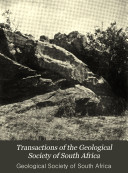The Formation of Grains of Sand
On the basis of the results recorded in this review, it can be claimed that the average sand grain has taken many hundreds of millions of years to lose 10 per cent. of its weight by abrasion and become subangular. It is a platitude to point to the slowness of geological processes. But much depends on the way things are put. For it can also be said that a sand grain travelling on the bottom of a river loses 10 million molecules each time it rolls over on its side and that representation impresses us with the high rate of this loss. The properties of quartz have led to the concentration of its grains on the continents, where they could now form a layer averaging several hundred metres thick. But to my mind the most astounding numerical estimate that follows from the present evaluations, is that during each and every second of the incredibly long geological past the number of quartz grains on earth has increased by 1,000 million.
Notes:
Miraculous in numbers.
Taxonomies:
/food and drink/food/grains and pasta (0.500877)
/shopping/gifts (0.122293)
/science/geology (0.117454)
Keywords:
average sand grain (0.918472 (negative:-0.400130)), astounding numerical estimate (0.849628 (positive:0.558373)), Sand Miraculous (0.734860 (neutral:0.000000)), quartz grains (0.720594 (neutral:0.000000)), geological processes (0.655563 (negative:-0.477128)), layer averaging (0.650135 (neutral:0.000000)), present evaluations (0.626448 (positive:0.558373)), high rate (0.622934 (negative:-0.472233)), slowness (0.478478 (negative:-0.477128)), abrasion (0.464430 (negative:-0.400130)), metres (0.460523 (neutral:0.000000)), millions (0.458746 (negative:-0.400130)), continents (0.452856 (negative:-0.277288)), molecules (0.451609 (negative:-0.472233)), Formation (0.451164 (neutral:0.000000)), concentration (0.448904 (negative:-0.277288)), hundreds (0.446665 (negative:-0.400130)), basis (0.446548 (neutral:0.000000)), numbers (0.445601 (neutral:0.000000)), results (0.442540 (neutral:0.000000)), review (0.442447 (neutral:0.000000)), way (0.442223 (positive:0.210657)), things (0.442199 (positive:0.210657)), cent. (0.441914 (negative:-0.400130)), weight (0.441844 (negative:-0.400130)), platitude (0.441450 (negative:-0.477128)), river (0.439005 (negative:-0.472233)), time (0.438872 (negative:-0.472233)), representation (0.438672 (negative:-0.472233)), mind (0.438501 (positive:0.558373))
Entities:
hundred metres:Quantity (0.010000 (neutral:0.000000))
Concepts:
Time (0.976449): dbpedia | freebase | opencyc
Sand (0.920505): dbpedia | freebase
Quartz (0.814949): dbpedia | freebase | opencyc
Sandstone (0.777386): dbpedia | freebase
Sediment transport (0.743415): dbpedia | freebase
Number (0.729250): dbpedia | freebase
Million (0.709861): dbpedia | freebase | opencyc
Gravel (0.709659): dbpedia | freebase | opencyc






